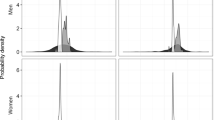Abstract
Researchers have developed a variety of computer-based models to estimate population exposure to air pollution. These models typically estimate exposures by simulating the movement of specific population groups through defined microenvironments. During the summer of 1998 and winter of 1999, researchers with the Harvard School of Public Health (HSPH) conducted a field study in Baltimore, MD, to acquire data for improving microenvironmental models. Using a special roll-around instrument system, a technician measured 1- and 12-h pollutant concentrations while engaging in scripted sequences of activities typical of retirees. Each scripted activity assigned the technician to a geographic location and to a microenvironment. The technician recorded special conditions associated with each activity (e.g., open windows, environmental tobacco smoke) in a real-time diary. Data on ambient pollutant levels, temperature, and other potential explanatory factors were also collected. Eleven pollutants were measured by the roll-around instrument system, including particulate matter with an aerodynamic diameter less than 2.5 µm (PM2.5), ozone, carbon monoxide, and benzene. This article presents the results of statistical analyses performed solely on the 1-h PM2.5 data measured by a DustTrak monitor, which ranged from 1.5 to 444.8 µg/m3 with a median value of 14.6 µg/m3. Results of stepwise linear regression (SLR) suggest that PM2.5 exposure is significantly increased by passive smoking, high ambient PM2.5 concentrations reported by fixed-site monitors, food preparation, charcoal grills, car travel, outdoor roadside locations, and high humidity. Analysts should explicitly represent the effects of these parameters within any model developed to estimate population exposure to PM2.5. In a related study, a panel of volunteer retirees each carried a personal PM2.5 monitor and a real-time diary for nominal 24-h sampling periods as they engaged in normal daily activities. A regression equation derived from SLR analysis of the scripted activity database was applied to eight subject-days of diary data provided by the volunteer seniors to produce estimates of PM2.5 exposure for each event documented in each diary. The event-specific exposure estimates were then averaged over all events in each sampling period to produce nominal 24-h average exposure estimates. The absolute difference between the estimate obtained from the regression equation and the corresponding personal monitor measurement averaged 13%. The fixed-site monitors generally provided poorer estimates of exposure; the absolute differences for the Old Town and Clifton Park monitors averaged 26.7% and 19.5%, respectively, of the personal monitor values.
This is a preview of subscription content, access via your institution
Access options
Subscribe to this journal
Receive 6 print issues and online access
$259.00 per year
only $43.17 per issue
Buy this article
- Purchase on Springer Link
- Instant access to full article PDF
Prices may be subject to local taxes which are calculated during checkout
Similar content being viewed by others
Author information
Authors and Affiliations
Corresponding author
Rights and permissions
About this article
Cite this article
JOHNSON, T., LONG, T. & OLLISON, W. Prediction of hourly microenvironmental concentrations of fine particles based on measurements obtained from the Baltimore scripted activity study. J Expo Sci Environ Epidemiol 10, 403–411 (2000). https://doi.org/10.1038/sj.jea.7500093
Received:
Accepted:
Published:
Issue Date:
DOI: https://doi.org/10.1038/sj.jea.7500093



